Story by Heidi Pool | Photography by Don Bloom/Tropical Light
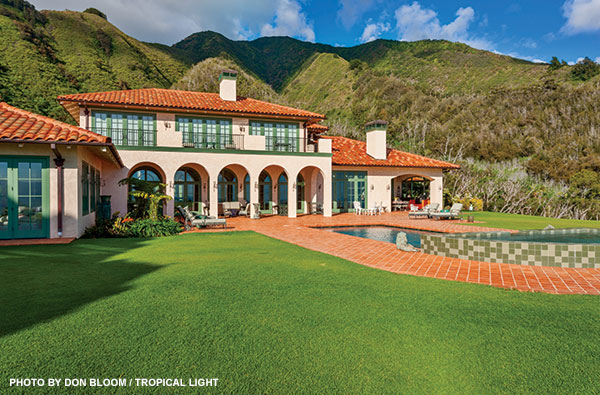
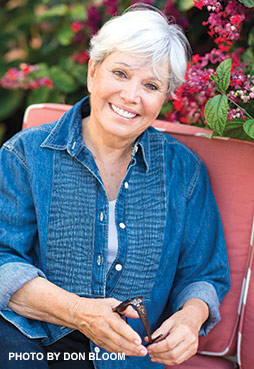 Leona Rocha Wilson believes that a good education makes anything obtainable, which is why she frequently hosts groups of Maui schoolchildren at her palatial home at the top of Wailuku Heights. “I want to expose our keiki to the possibilities.” At one such gathering, a fifth-grade girl walked up to Leona and asked, in awe, “Are you royalty?” To which Leona replied, “No, honey, I’m Portagee.”
Leona Rocha Wilson believes that a good education makes anything obtainable, which is why she frequently hosts groups of Maui schoolchildren at her palatial home at the top of Wailuku Heights. “I want to expose our keiki to the possibilities.” At one such gathering, a fifth-grade girl walked up to Leona and asked, in awe, “Are you royalty?” To which Leona replied, “No, honey, I’m Portagee.”
The youngest of six children, Leona grew up in the Hamakuapoko sugar-plantation camp (nicknamed H-Poko) on Maui’s north shore. There was no money for college, so her mother encouraged her to enlist in the service to qualify for the G.I. Bill. Leona was one of the first women accepted into the Army’s dental technician program at Fort Sam Houston, Texas.
She met and married her first husband while they were both in the military. When she became pregnant, she decided to make her own maternity clothes. “I took a sewing class at the YWCA, and discovered I loved creating and constructing clothing.”
Leona spent the next eight years working as a secretary by day, and attending the Fashion Institute of Technology at night — financed by the G.I. Bill. She graduated with honors and a degree in apparel design. By then, Leona had a business called Fashionetics, which manufactured sewing supplies like color wheels, tracing tools, and pincushions. She also invented the Fashion Ruler, still sold today, which lets home seamstresses alter dress patterns to suit their own figures. “The Fashion Ruler revolutionized pattern alteration,” Leona says. “I just wanted to make sewing easier.”
She became the national spokeswoman for Simplicity Pattern Company. A few years later, Vogue/Butterick wooed her away — in every sense of the word. “I married the company’s owner, Bill Wilson,” Leona says.
Now “retired,” Leona spends her time working on the property Bill dubbed “Lona Ridge” (“Lona” is her nickname), and entertaining family and friends. Every Monday, she hosts a farm lunch. “Everyone is welcome, but you must contribute,” she says. “You can either bring a dish to share, or work for an hour and a half pulling weeds.” The rules apply to everyone, even a recent guest: Maui County Mayor Alan Arakawa.
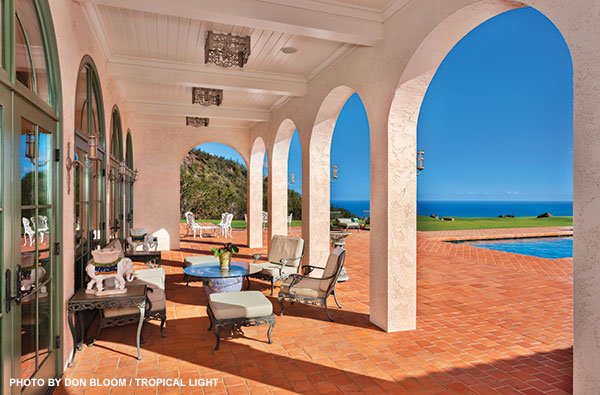
Leona is a petite, trim, impeccably dressed woman with a handsome head of silver-white hair, and a smile that could light up Alaska in the dead of winter. She loves a good story — and a good bargain. Displayed in her family room is a set of twelve exquisite Lalique crystal glasses. “Bill and I were in Beverly Hills,” she recalls. “I admired these in a store across from our hotel, but they were $900 apiece. The next day, I noticed a sign in the window announcing the sheriff was holding a tax sale. I asked Bill if he had $1,000 cash on him. He did. I went across the street and told the sheriff I really wanted those glasses, but all I had was $1,000. He didn’t care about their value — he just wanted to cover the taxes due. So I got twelve glasses for the price of one!”
Leona nearly got more than she bargained for when she and Bill purchased their six-acre lot in Wailuku Heights in 2007, cleared hundreds of trees, and began building the 10,000-square-foot, five-bedroom, five-and-a-half-bathroom home. “My architect friend, Tim Farrington, told me, ‘This is a huge project, Leona. You should have house drawings made, then sell them along with the property. You don’t want to get involved with something this big.’”
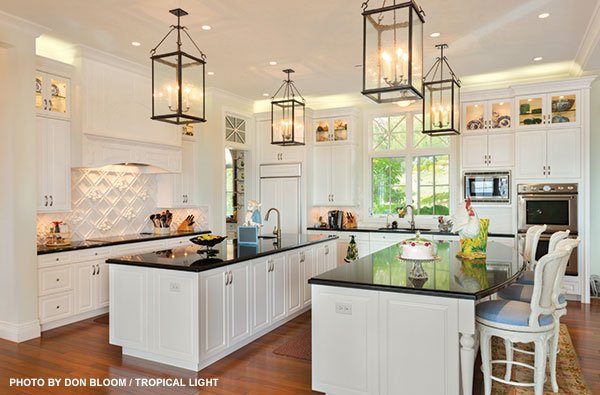
Undaunted, Leona and Bill (who passed away before the house was completed) spent two years preparing the site. “We cut the mountain down by some twenty feet,” Leona says. “We took away 3,700 truckloads of soil, which left us with engineered fill. We then had to bring several hundred truckloads of topsoil up to the property.” Leona says Bill maintained his sense of humor throughout the process. “People would ask him, ‘How did you think to do something like this?’ To which he’d reply, ‘I said yes to Leona one too many times.’”
For the house plans, Leona and Bill turned to longtime friend and design partner Marsha Sewell, with whom they’d previously worked on several houses. “Leona was set on a [Charles W.] Dickey-style home,” says Marsha, referring to the iconic Hawai‘i architect whose Maui structures include the Wailuku Public Library, Makawao Union Church and Kaluanui Estate — home of Hui No‘eau Visual Arts Center. “Leona wanted her house to be reminiscent of the California Mission style, but with Dickey influences. She also wanted the home to look as though it’s been there awhile.” Marsha drew initial exterior elevation sketches, which Leona and Bill took to Nishikawa Architects in Wailuku. They worked with Morgan Gerdel, A.I.A., who has an affinity for Dickey’s architectural design.
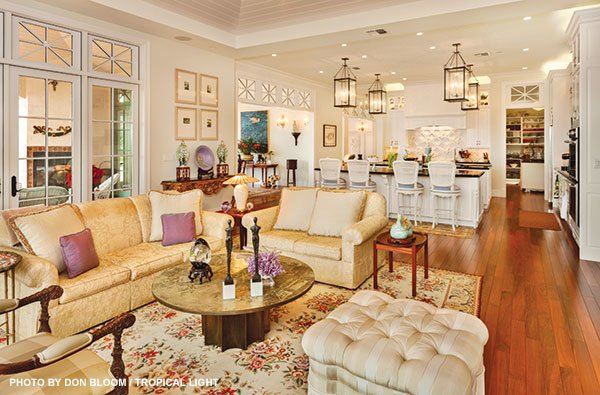
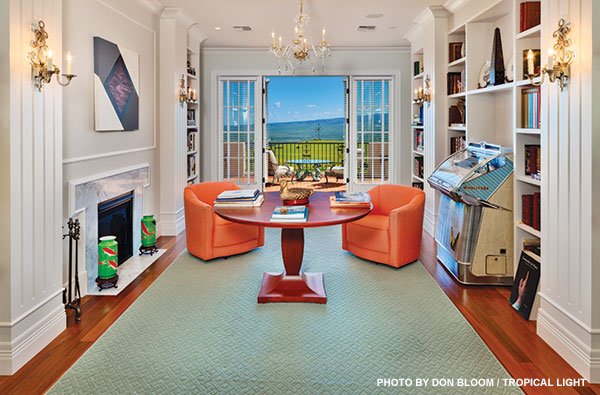
“Dickey drew from the Mission style, with its red-clay-tile roofs, pale stucco walls, arcaded lanai and exposed roof rafters,” says Gerdel, “but his architecture relates more directly to Hawai‘i’s climate. It incorporates large, open spaces for natural ventilation, and deep overhangs to protect window openings.”
Dickey’s designs are also renowned for high ceilings and lots of windows. His open floor plans allow for natural cooling from the trade winds, but they limit the amount of wall space available for showcasing art. “I love art, and I had to aggressively pare down my collection for this house,” says Leona.
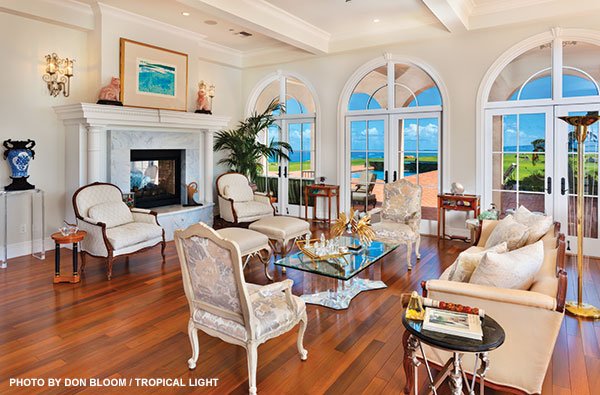
Remarkably, Marsha and Leona didn’t purchase a single item for the home’s interior. “We worked with what was already in Leona’s possession,” says Marsha. “Every painting, artifact, sofa, and rug works beautifully.” And Leona takes pride in having employed all local construction workers and craftsmen, including master woodworker David Powell, who built the grand staircase. “I thought installing the staircase would be a breeze,” Leona says. “But David had to lay one piece of ipe wood at a time. It was a painstaking process.”
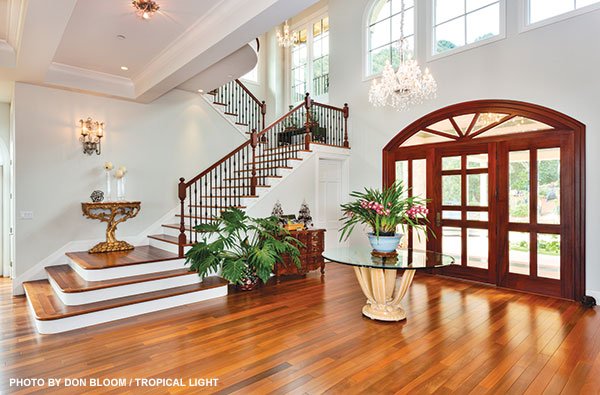
The staircase leads to three en-suite bedrooms that surround an entertainment area whose focal point is a Wurlitzer jukebox filled with original 45 rpm records, and two sizeable antique slot machines, one of which is truly a “one-armed bandit.”
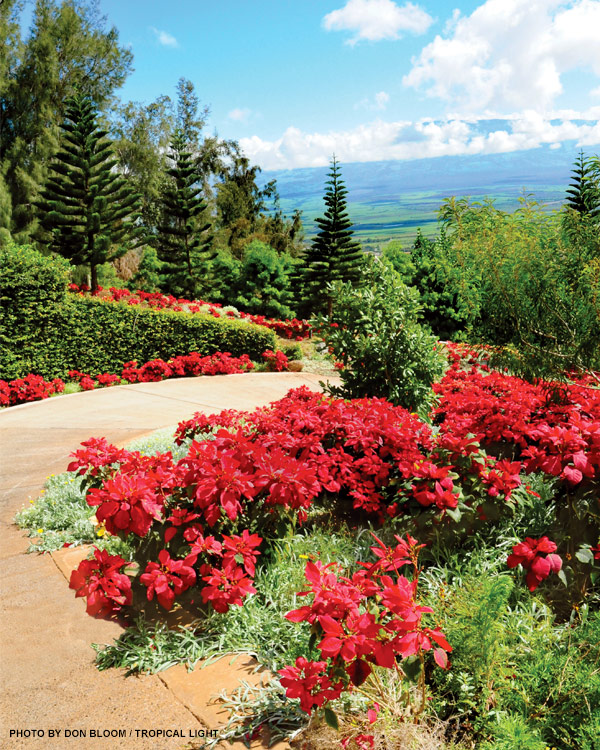
Downstairs, every room opens to the outside, and what’s likely the most commanding view of any property on Maui: a 360-degree panorama of the central isthmus, Haleakala, the Pacific Ocean on two coastlines, and, at the rear of the property, West Maui mountain slopes leading into ‘Iao Valley.
Leona and her groundskeepers grow native plants such as ‘iliahi (sandalwood), mamaki, hapu‘u (tree fern), ‘ohi‘a lehua, and more than 300 rare koai‘a trees, from whose dense wood Hawaiians crafted spears, shark hooks, calabashes, and kapa-pounding tools. Leona chuckles about her new vocation: “I went from fashion to farming, and what did I know about farming? Absolutely nothing.”
Although Leona’s pronunciation reflects her many decades spent living in New York, her “local girl” accent comes through when she talks about growing up on a plantation on her beloved Maui. Displayed prominently in her living room, among treasured objets d’art, are her grandfather’s kau kau tins (metal double-decker lunchboxes that hearken back to the days when plantation workers brought food from home for their midday meal).
“I’m so fortunate,” she says. “Can you imagine a young woman from H-Poko living the life I’ve had? It’s like a fairy tale. And it would never have happened without my mother’s good sense. All she wanted was for me to get an education.”

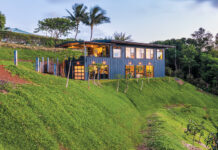
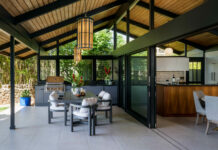
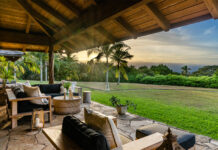
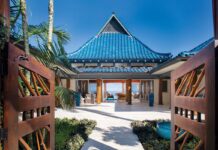

I was told by a friend to go tour your house and property if I ever get to Maui. I’ve only been to kauai once , but my next Island will be Maui. Do you have tours of your house? I would love to see it.
Respectfully
Deanna